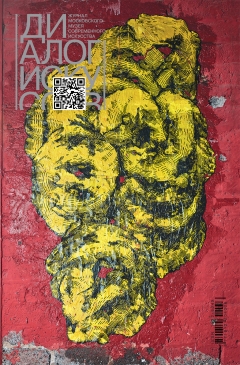We often read about “boundaries” in theatre announcements and reviews. Critics write about “boundaries” when they are confronted with a gap, a lacuna, a failure. These are our shared professional limits in the face of new theater and new theatricality as part of contemporary art, which flouts any boundaries, limits, or boxes–be they Italian gilded boxes or modernist black boxes.
It is easy to mock this linguistic helplessness. More difficult is to answer the question: what can we do with it? This is the more so as nobody is going to help us. William Kentridge definitely does not divide himself into a Kentridge for art critics at an exhibition in HAU and a Ken- tridge for opera critics at the festival in Aix-en-Provence. The same is the case with Jan Fabre. He does not divide himself into a Fabre for the Hermitage Museum and a Fabre for the Avignon Festival. The professional community of critics risks falling out of communication with new theater and its viewer. None of the professional community’s critical approaches have so far helped venues or the public, who often do not really understand where they have come to and what they have spent their money and time on.
Take for example, a video installation by the famous British director Katie Mitchell, which was brought from the Victoria and Albert Museum and set up in the foyer of the Stanislavsky Electrotheatre. It complies with all the contemporary exhibition practices: a well-conceived exhibition design, labels, and thoughtful texts from the curator. At the same time, it is a very conservative stage play–a famous actress performs different interpretations of Ophelia’s monologue in front of a camera. Although the mono- logues are shown simultaneously on different screens, you can watch them only one by one. This is also a journey into the history of directing, since the video fragments are named after renowned theatre directors such as Stanislavsky, Brook, Artaud, etc. And, the mere fact that the exhibition is set up in the foyer throws us into confusion–as a spectator I should enter the theater but then walk past the auditorium. All in all, what kind of a place have I come to?
There are similar exhibition plays or museum plays that have been staged with the participation of performers. This is how Alien Invasion Museum, produced by a group of artists led by Ksenia Peretrukhina, works. As spectators walk around the exhibition, which is a detailed imitation of an exhibition set up in a Soviet provincial venue and dedicated to an alleged alien invasion which took place somewhere in the Tomsk Oblast, two performers’ roles gradually shift–in the beginning they appear as emotionally detached tour guides and then turn into young researchers who are having an argument.
Sometimes boundaries are less of a defined line and more of a flickering–placing an object or an artistic gesture in different contexts, simultaneously. It is an exciting yet unexplored trend, which requires from the viewer an ability to combine different perspectives. Heiner Goebbels is one of the best-equipped contemporary composers and equally one of the most inventive theater direc- tors. William Kentridge, a virtuoso draughtsman trained in the classical tra- dition, is known as a video artist and a theater director. These and many other biographies of artists hint at the fact that the whole range of ideas with which these versatile creators work can only be understood as part of an interdisciplinary dialogue.
DI # 5-2018




